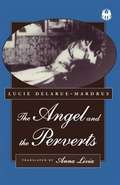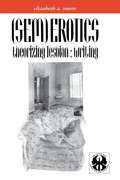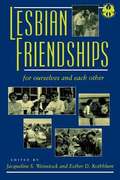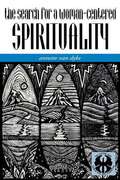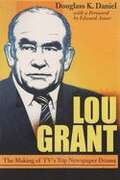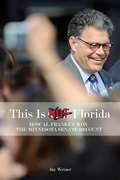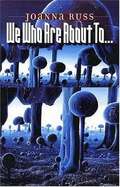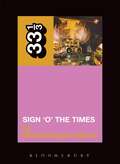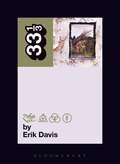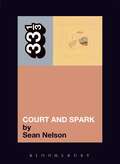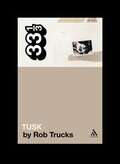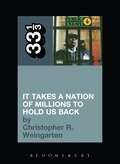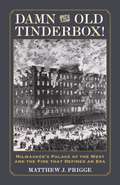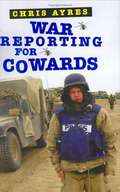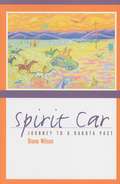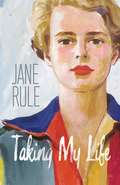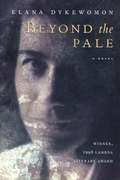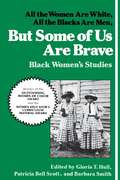- Table View
- List View
The Angel and the Perverts
by Lucie Delarue-Mardrus Anna LiviaFirst published in 1930. Set in the lesbian and gay circles of Paris in the 1920s, The Angel and the Perverts tells the story of a hermaphrodite born to upper class parents in Normandy and ignorant of his/her physical difference. As an adult, s/he lives a double life as Marion/Mario, passing undetected as a lesbian in the literary salons of the times, and as a gay man in the cocaine dens made famous by Colette.
(Sem)Erotics: Writing
by Elizabeth MeeseWhat is at stake in the production of experimental texts by lesbian writers? what motivates these writers and characterizes their work? In this work, Elizabeth Meese examines the ways in which the experiences of the text, and the experiences of character, diverge and converge wit the writer's own biography.
Lesbian Friendships (Cutting Edge)
by Jacqueline S. Weinstock Esther RothblumFriends as lovers; lovers as friends; ex-lovers as friends; ex-lovers as family; friends as family; communities of friends; lesbian community. These are just a few of the phrases heard often in the daily discourse of lesbian life. What significance do they have for lesbians? Do lesbians view friends as family and what does this analogy mean? What sorts of friendships exist between lesbians? What sorts of friendships do lesbians form with non-lesbian women, or with men? These and other questions regarding the kinds of friendships lesbians imagine and experience have rarely been addressed. Lesbian Friendships focuses on actual accounts of friendships involving lesbians and examines a number of issues, including the transition from friends to lovers and/or lovers to friends, erotic attraction in friendship, diverse identities among lesbians, and friendships across sexuality and/or gender lines.
The Search for a Woman-Centered Spirituality
by Annette Van DykeThis work focuses on one of the salient developments of contemporary feminism. Instead of abandoning religious practice altogether as relics of a patriarchal past, large numbers of women have sought to incorporate healing and positive aspects of their spiritual heritage into their lives. Women have also resurrected non-Western traditions and have created alternative rituals, beliefs, and stories to enhance and enlighten our day-to-day existence. This work is a tribute to that creative energy and to the way in which it has enriched feminism for many. The book analyzes themes in several books exemplifying woman-centered spirituality.
Lou Grant: The Making of TV's Top Newspaper Drama (Television and Popular Culture Ser.)
by Douglass K. DanielAn account of the TV program Lou Grant. The creation of characters, casting of actors, the script writing process and the impact of network censors are detailed here. Interviews with actors, producers, writers, directors are also incorporated. It summarizes all 114 episodes, discusses original character sketches, and includes editorial cartoons of the critical acclaimed TV drama. The book also describes the bitter controversy that erupted in 1982 when lead actor Edward Asner came under fire for his political beliefs regarding American involvement in El Salvador.
This Is Not Florida: How Al Franken Won the Minnesota Senate Recount
by Jay WeinerOn July 7, 2009, Al Franken was sworn in as Minnesota's junior U.S. senator, eight months after Election Night. In the chill of November 2008, Republican incumbent Norm Coleman led by a slim 215 votes, a margin that triggered an automatic statewide recount of more than 2.9 million ballots. Minnesota's ensuing recount, and the contentious legal and public relations battle that would play out between the Franken and Coleman lawyers and staff, simultaneously fascinated and frustrated Minnesotans and the nation-all while a filibuster-proof Senate hung in the balance. This Is Not Florida is the behind-the-scenes saga of the largest, longest, and most expensive election recount in American history. Reporter Jay Weiner covered the entire recount process-for which he was honored with Minnesota's most prestigious journalism award-following every bizarre twist and turn and its many colorful personalities. Based on daily reporting as well as interviews with more than forty campaign staffers and other participants in the recount, This Is Not Florida dives into the motivations of key players in the drama, including the exploits of Franken's lead attorney Marc Elias, some of the mistakes made by Coleman advisers, and how the Franken team's devotion to data collection helped Franken win the recount by a mere 312 votes. In a fascinating, blow-by-blow account of the historic recount that captivated people nationwide, Jay Weiner gets inside campaign war rooms and judges' chambers and takes the reader from the uncertainties of Election Night 2008, through the controversial State Canvassing Board and a grueling eight-week trial, to an appeal to Minnesota's Supreme Court, and finally to Al Franken's long-awaited and emotional swearing-in. This Is Not Florida presents an important and unforgettable moment in political history that proved that it's never really over until it's actually over.
We Who Are About To...
by Joanna Russ Samuel R. DelanyFirst published in 1976. A multi-dimensional explosion hurls the starship's few passengers across the galaxies and onto an uncharted barren tundra. With no technical skills and scant supplies, the survivors face a bleak end in an alien world. One brave woman holds the daring answer, but it is the most desperate one possible. Elegant and electric, We Who Are About To... brings us face to face with our basic assumptions about our will to live. While most of the stranded tourists decide to defy the odds and insist on colonizing the planet and creating life, the narrator decides to practice the art of dying. When she is threatened with compulsory reproduction, she defends herself with lethal force. Originally published in 1977, this is one of the most subtle, complex, and exciting science fiction novels ever written about the attempt to survive a hostile alien environment. It is characteristic of Russ's genius that such a readable novel is also one of her most intellectually intricate.
Sign 'O' the Times (33 1/3 #10)
by Michaelangelo MatosOne of the greatest double albums of the vinyl era, Sign 'O' the Times shows Prince at his peak. Here, Michaelangelo Matos tells the story of how it emerged from an extraordinary period of creativity to become one of the landmark recordings of the 1980s. He also illustrates beautifully how - if a record is great enough and lucky enough to hit you at the right time - it can change your way of looking at the world.
Led Zeppelin's Led Zeppelin IV (33 1/3 #17)
by Erik DavisStripping their famous name off the record was Led Zeppelin’s almost petulant attempt to let their Great Work stand on its own two feet. But the wordless jacket also lent the album charisma. Fans hunted for hidden meanings, or, in failing to find them, sensed a strange reflection of their own mute refusal to communicate with the outside world. This helped to create one of the supreme paradoxes of rock history: an esoteric megahit, a blockbuster arcanum....
Joni Mitchell's Court and Spark (33 1/3 Ser. #40)
by Sean NelsonIt’s a sucker bet to try and argue that Blue, or For 2 the Roses, or The Hissing of Summer Lawns are better or worse albums than Court and Spark, or than one another. In a certain way, they all feel like one sustained burst of musical endeavor from an artist who had only just begun to understand what she was capable of—and before she had decided to leave that strength behind in search of new powers. Still, Court and Spark is such a clear turning point, not just in terms of its popularity, but in terms of its approach. It represents a perfect example of an artist reaching out to a wide audience without pandering to it, in what feels, more than three decades on, like an honest attempt to say as much as possible to as many people as possible.
Fleetwood Mac's Tusk (33 1/3 Ser. #77)
by Rob TrucksAfter Rumours became the best-selling single album of all-time, Fleetwood Mac asked Warner Brothers Records to buy them a studio (the label refused, costing both Warner Brothers and the band significant cash in the long run) and then handed the reins to their guitarist and resident perfectionist Lindsey Buckingham, a fusion of factors that led Tusk to become the first record in history to cross the million dollar threshold in production costs. “You know,” Buckingham told me, “we had this ridiculous success with Rumours. And at some point, at least in my perception, the success of that detached from the music, and it was more about the phenomenon. We were poised to do another album, and I guess because the axiom 'If it works, run it into the ground’ was prevalent then, we were probably poised to do Rumours II. I don’t know how you do that, but somehow my light bulb that went off was, ‘Let’s just not do that. Let’s very pointedly not do that.’” Here, Rob Trucks talks to Lindsey Buckingham, as well as members of Animal Collective, Camper Van Beethoven, the New Pornographers, Wolf Parade, the Fleetwood Mac tribute band. Tusk, and the USC Trojan marching band in order to chart both the story and the impact of an album born of personal obsession and a stubborn unwillingness to compromise.
Public Enemy's It Takes a Nation of Millions to Hold Us Back (33 1/3 Ser. #71)
by Christopher R. WeingartenChristopher R. Weingarten provides a thrilling account of how the Bomb Squad produced such a singular-sounding record: engineering, sampling, scratching, constructing, deconstructing, reconstructing—even occasionally stomping on vinyl that sounded too clean. Using production techniques that have never been duplicated, the Bomb Squad plundered and reconfigured their own compositions to make frenetic splatter collages; they played samples by hand together in a room like a rock band to create a “not quite right” tension; they hand-picked their samples from only the ugliest squawks and sirens.
Heroes and Orators
by Robert PhelpsAgainst the background of studied urbanity in an art colony in the Catskills is developed the progression into emotional bankruptcy of three lives, recorded by Roger Becket, a watcher, involved beyond his willingness. After Mark's death, his twenty-year-old wife, Elizabeth, leaves the Pennsylvania university town where her husband taught, to live in Highkill with Margot, Mark's first wife, a commercial artist. Elizabeth is a beautiful, willful, intriguing creature, fascinated by her own perversities and fascinating to Margot who loves her but is ashamed of her feelings, to Roger who, unsure of his own role and responsibilities is afraid of her, and to Gib, who sees her as another in a long line of bedfellows. Mark's death has been for Roger the beginning of his self-realization through the relationships which it thrust upon him.
Damn the Old Tinderbox!: Milwaukee's Palace of the West and the Fire That Defined An Era
by Matthew J. PriggeIn the dead of an unassuming January night in 1883, Milwaukee’s Newhall House hotel was set on fire. Two hours later, the building—once among the tallest in the nation—lay in ruins and more than seventy people were dead. It was a tragedy that brought global notice to Milwaukee, with daring escapes, unlikely rescues, and heart-wrenching tales of victims burned to death or killed as they leapt from the burning building. From the great horror emerged an even greater string of mysteries: Who had set the fire, and who was to blame for the staggering loss of life? The Newhall’s hard-luck barkeeper? A gentleman arsonist? What about the many other unexplained fires at the hotel? Had the Newhall’s management neglected fire safety to boost profits? Would the true number of victims ever be known?
War Reporting for Cowards
by Chris AyresFrom the book: "Captain," I called out. -How dangerous is this going to be?" "Don't worry," he said with a straight face. "People think artillery is boring. But we kill more people than anyone else." Chris Ayres never wanted to be a war correspondent. A small-town boy, a hypochondriac, and a neat freak with an anxiety disorder, he saw journalism as a ticket to lounging by swimming pools in Beverly Hills and sipping martinis at Hollywood celebrity parties. Instead, he keeps finding himself in the wrong place at the wrong time, whether it's a few blocks from the World Trade Center on September 11 or one cubicle over from an anthrax attack at The New York Post. Then, a misunderstanding with his boss sees him transferred from Hollywood to the Middle East, where he is embedded with the Marine Corps on the front line of the Iraq War, headed straight to Baghdad with a super-absorbent camping towel, an electric toothbrush, and only one change of underwear. What follows is the worst (not to mention the first) camping trip of his life. War Reporting for Cowards is the Iraq War through the eyes of a "war virgin." After a crash course on "surviving dangerous countries" where he nearly passes out when learning how to apply a tourniquet, and a gas mask training exercise where he is repeatedly told he is "one very dead media representative," Ayres joins the Long Distance Death Dealers, a battalion of gung-ho Marines who kill more people on the battlefield than anyone else. Donning a bright blue flak jacket and helmet, he quickly makes himself the easiest target in the entire Iraqi desert. Ayres spends the invasion digging "coffin-sized" foxholes, dodging incoming mortars, fumbling for his gas mask, and, at one point, accidentally running into the path of a dozen Republican Guard tanks amid a blinding mud storm. By "bogged down" by the growing insurgency, Ayres realizes not only what the sheer terror of combat feels like, but also the visceral thrill of having won a fight for survival. In the tradition of M*A*S*H and Catch-22, War Reporting for Cowards is by turns extraordinarily honest, heartfelt, and bitterly hilarious. It is destined to become a classic of war reportage.
Spirit Car: A Journey to a Dakota Past
by Diane WilsonGrowing up in the 1950s in suburban Minneapolis, Diane Wilson had a family like everybody else’s. Her Swedish American father was a salesman at Sears and her mother drove her brothers to baseball practice and went to parent-teacher conferences. But in her thirties, Diane began to wonder why her mother didn’t speak of her past. So she traveled to South Dakota and Nebraska, searching out records of her relatives through six generations, hungering to know their stories. She began to write a haunting account of the lives of her Dakota Indian family, based on research, to recreate their oral history that was lost, or repressed, or simply set aside as gritty issues of survival demanded attention. Spirit Car is an exquisite counterpoint of memoir and carefully researched fiction, a remarkable narrative that ties modern Minnesotans to the trauma of the Dakota War. Wilson found her family’s love and humor--and she discovered just how deeply our identities are shaped by the forces of history.
Murrow: His Life and Times
by A. M. SperberMurrow is the biography of America's foremost broadcast journalist, Edward R. Murrow. At twenty-nine, he was the prototype of a species new to communications--an eyewitness to history with the power to reach millions. His wartime radio reports from London rooftops brought the world into American homes for the first time. His legendary television documentary "See It Now" exposed us to the scandals and injustices within our own country. Friend of Presidents, conscience of the people, Murrow remained an enigma--idealistic, creative, self-destructive. In this portrait, based on twelve years of research, A. M. Sperber reveals the complexity and achievements of a man whose voice, intelligence, and honesty inspired a nation during its most profound and vulnerable times.
Don't Touch That Dial!: Radio Programming in American Life, 1920 - 1960
by J. MacDonaldFor those who loved it, as well as for those who missed it, this book brings to life old-time radio, which was often called a "theater of the mind." It is an entertaining and important history of radio programming and its role in shaping social values and thought in America.
Taking My Life
by Jane RuleDiscovered in her papers as a handwritten manuscript in 2008, Jane Rule's autobiography is a rich and culturally significant document that follows the first twenty-one years of her life. In writing about her formative years, she is indeed "taking" the measure of her life, assessing its contours of pleasure and pain, and accounting precisely for how it evolved, with great discretion and consideration for those who might have been affected by being represented in her work. She appreciated the ambiguity of the title she chose, with all its implications of suicide: at the end of her writing life, she was submitting herself as a person, not only to the literary and cultural, but also the moral and ethical critique of her readers. At turns deeply moving and witty,Taking My Lifeprobes in emotional and intellectual terms the larger philosophical questions that were to preoccupy her throughout her literary career, and showcases the origins and contexts that gave shape to Rule's rich intellectual life. Her autobiography will appeal to avid followers of her work, delighted to discover another of her works that has, until now, remained unpublished.
Beyond the Pale
by Elana DykewomonSet in Russia and New York between 1860 and 1912, this epic novel uncovers a rich legacy of Jewish lesbians whose stories have until now fallen between the cracks of history.
On Strike Against God: A Lesbian Love Story
by Joanna RussJoanna Russ's On Strike Against God is remarkable for its deft intertwining of many themes: not only the overt one of coming out, but many intricately (and inevitably) interlaced stories of alienation, a search for community and rebellion against how our society defines women. Some editions are subtitled "A Lesbian Love Story," and it is, but even more, this is a manifesto of modern feminism and an astute, often funny, but also angry look at what it means to be a woman.
But Some of Us Are Brave: All the Women Are White, All the Blacks Are Men - Black Women's Studies
by Barbara Smith Gloria T. Hull Patricia Bell ScottThis ground-breaking collection provides hours of enjoyment for the general reader and a wealth of materials needed to develop course units on black women; political theory, literary essays on major writers, guidelines for consciousness-raising about racism, and surveys of black women's contributions to the blues. "Important and innovative. "--Feminist Bookstore News
Angel Dance: A Thriller
by Mary F. BealClassic lesbian thriller. The narrator, Kat, has been active in radical feminist politics long enough to know how to take care of herself--which is a good thing because her new job, protecting best-selling feminist author, Angel Stone, is going to test every one of her survival skills. Kat is tough, cool and disengaged, except for her passion for Angel Stone. Angel may be the most attractive woman she has ever known, but being around her can only spell danger.
FDR's Splendid Deception
by Hugh Gregory GallagherFocuses on FDR's disability and the lengths gone to to conceal it from the world.
Hardball for Women: Winning at the Game of Business
by Susan K. Golant Pat HeimFrom the book: "The majority of women in the business world today are oblivious to the fact that they are standing on a playing field while a game is being played around them. Until you realize that business is conducted as a sport, you'll never move ahead and you'll never win" --PAT HEIM Exploring from the ground up how boys and girls are taught to behave, author Pat Heim uses her extensive experience in the business world and a wide variety of research to show you how your behavior is interpreted to determine whether you are strong or weak, clear or vague, ambitious or passive, and, ultimately, promotable or not. Then she shows you how to understand the game of business and how to build on that understanding to succeed in your career. You'll master the following skills: How to lead men, and how to lead women. How to turn criticism and praise to your advantage. How to display confidence and power even when you feel frightened and powerless. How to be on either end of an attack during a business meeting and still remain cordial later. How to offer help so you're not seen as obstructionist. How to take risks. (continued from front flap) How to distinguish between the male and female version of a "team player." How to work with people you don't like. How to hide your vulnerability. The goal of Hardball for Women is to let you act rather than react, to help you see the rules that men play by and use them to meet your own goals, to make you feel comfortable, even exhilarated, with playing the competitive game. This book will give you the strategies that have worked to bring success in business.
